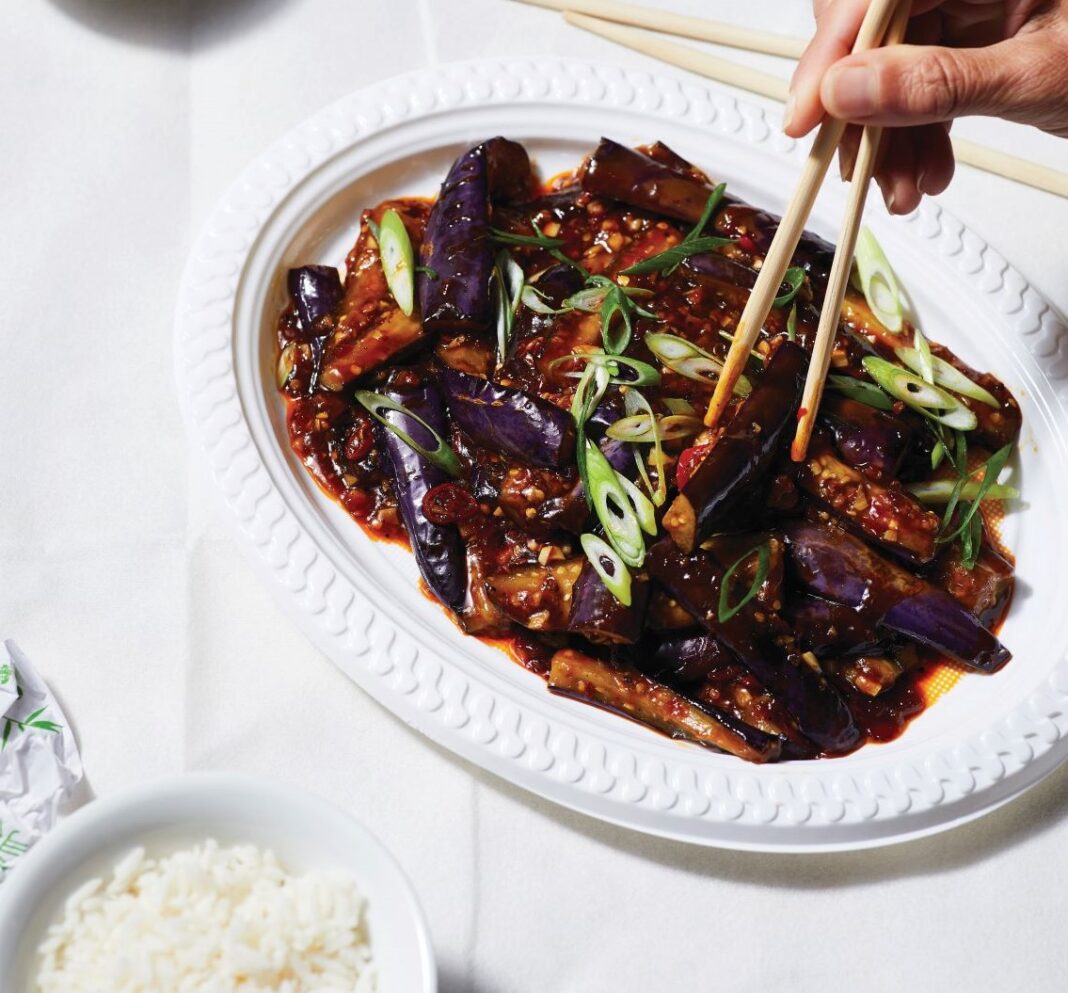Food writer Libby Kimber encourages you to warm up the winter nights and bring some spice into the kitchen with this sichuan style braised eggplant recipe.
Recipe extracted from F*ck That’s Hot! by Billy Law, published by Smith Street Books, $39.99, Photography © Georgia Gold.
Serves 4 as a side dish
- 3 long Chinese eggplants (about 600g)
- Sea salt
- 2 Tbsp vegetable oil
- 1 tsp Sichuan peppercorns, coarsely crushed
- 2 bird’s eye chillies, thinly sliced
- 2 Tbsp doubanjiang
- 4 garlic cloves, finely chopped
- 2.5cm knob of ginger, grated
- 1 spring onion, thinly sliced
- Handful of coriander leaves, roughly chopped (optional)
- Steamed jasmine rice, to serve
Yu xiang sauce
- 1 tsp light soy sauce
- 2 Tbsp Shaoxing rice wine
- 1 Tbsp Chinese black vinegar
- 2 tsp cornflour
- 1 Tbsp sugar
Cut the eggplants in half, then cut each half into quarters. Place the eggplant on a baking tray, skin side down, and lightly sprinkle salt over the top. Set aside for 20 minutes to allow the eggplant to sweat out some of its juices, then rinse and pat dry with paper towel.
Meanwhile, combine the yu xiang sauce ingredients in a small bowl. Set aside.
Heat the vegetable oil in a wok or large frying pan over high heat until smoking. Add the eggplant and stir-fry for 2-3 minutes, until the eggplant is soft and starting to brown on all sides. Add the Sichuan peppercorns, chilli, doubanjiang, garlic and ginger and stir-fry for 1 minute or until fragrant.
Give the yu xiang sauce a quick stir and pour over the eggplant. Reduce the heat to medium and gently stir until the eggplant is nicely coated in the sauce. Taste and adjust the seasoning if necessary. Simmer for 1 minute or until the sauce thickens and becomes glossy.
Transfer the eggplant to a serving dish, sprinkle over the spring onion and coriander leaves (if using) and serve with steamed jasmine rice on the side.
Note: Doubanjiang is a fermented spicy broad bean paste widely used in Sichuan cuisine. Usually there are two types: spicy and non-spicy. Obviously we opted for the spicy version.
For more recipes:



